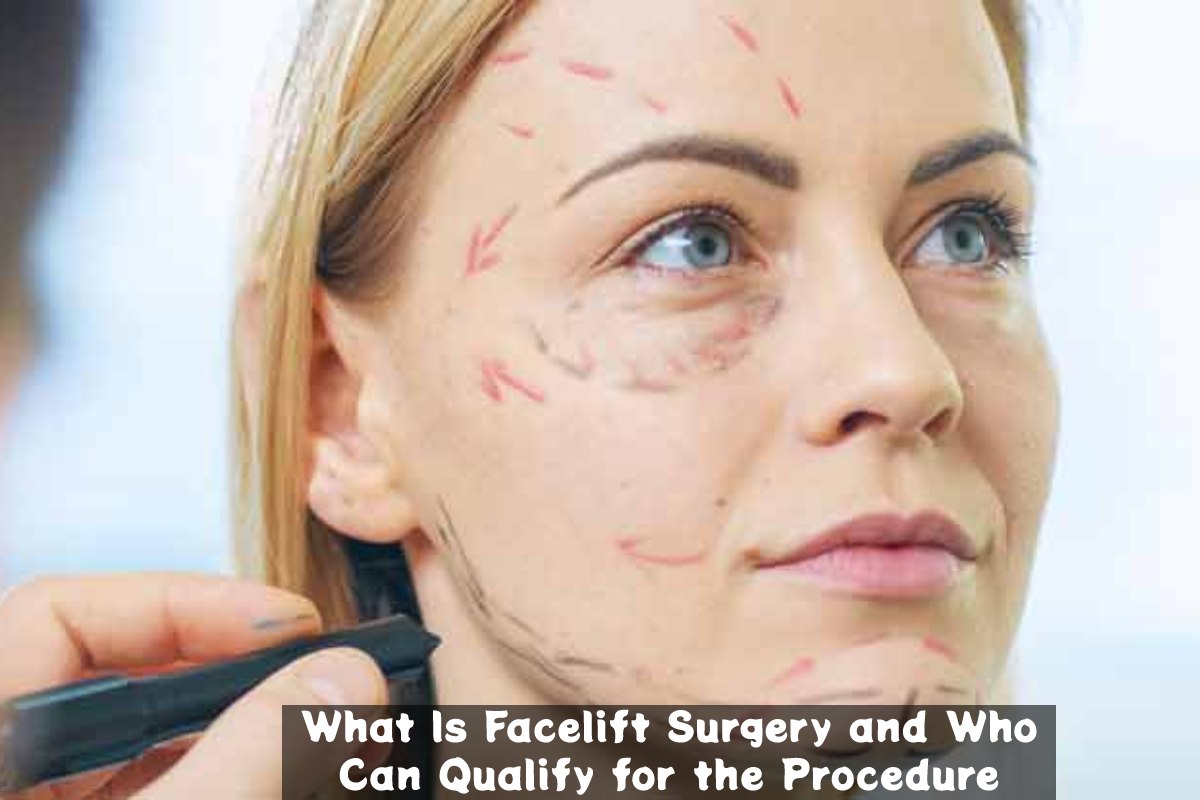Facelift Surgery – A facelift (rhytidectomy) helps create a younger look by removing visible wrinkles and reducing sagging skin.
During a facelift procedure, a flap of skin and underlying tissue on both sides of the face is pulled back and secured. Excess skin is also removed to give your face a more youthful appeal without appearing overly tight or unnatural.
This cosmetic surgery helps to restore aging skin from visible signs such as:
- Sagging facial skin
- Deep fold lines between the corner of the mouth and the nose
- Fleshy skin developing in the cheeks and jaw
- Excess fat below the jaw that appears as a double chin
A successful procedure removes excess skin, smooths out folds or wrinkles, and tightens facial tissues.
Table of Contents
Who Qualifies for a Facelift Restorative Surgery?
Generally, you can make a good candidate if:
- You are physically healthy without a medical condition that affects your ability to heal quickly.
- You don’t smoke.
- You are mentally healthy, with realistic expectations of the results.
The best candidates for a facelift include patients with signs of facial aging with some skin elasticity. These candidates are primarily in their 40s to 60s, although some patients could be younger or even older.
What to Expect From Your First Consultation
Each facelift is unique to the person’s facial contours and goals. Before the procedure, you will have a 15 to 30 minute consultation (or longer) with your plastic surgeon to discuss:
- Your personal and family medical history
- Any medications you are taking
- Lifestyle habits, such as smoking
- Your surgical goals
- Alternatives to facelifts if you are not a suitable candidate for medical reasons
The consultation is always an open dialogue, as the surgeon goes over the details of the procedure while ensuring the patient has a realistic idea of the outcome. In addition, the doctor will also examine the skin in the target area and take photographs.
Facelift Options Available to You
Each type of facelift targets a specific portion of your facial structure. Here are some of the facelift surgery options available to you.
1. Deep Plane/SMAS Facelift
This procedure eliminates sagging skin at the base of the neck and chin by lifting the lax muscles in that portion. The surgeon delves under the skin near the muscles used for smiling and frowning and repositions, reshapes, and smooths them.
2. Mini Facelift
The surgeon makes small incisions under the hairline and skillfully tightens the skin while removing excess tissue on the lower face.
3. Mid-Facelift
This facelift targets the midsection of the face, especially the cheeks. The surgeon removes or uses excess tissue to lift your cheeks.
4. Jawline Rejuvenation
Often, signs of old age show around the jaw and neckline. A jawline rejuvenation will entail the removal of excess fat cells around the neck; this allows the surgeon enough room to reshape the jawline.
5. S-Lift
The surgeon makes an S-shaped incision on the lower half of the face around the jawline and neck. The incision allows the surgeon to lift the skin, remove excess fat, and contour the underlying tissue. This is also known as the Ogee Lift.
6. Cutaneous Lift
The cosmetic surgeon makes small incisions around the hairline and ears. They then separate the top layer from the muscles and tissues underneath. Finally, the surgeon trims excess skin, tightens it, and seals it with sutures.
7. Temporal/Brow Lift
In this procedure, the doctor makes a small incision along the hairline and lifts the skin and underlying muscles to stretch out the sagging skin on the eyelids. While this is not technically considered to be a facelift, it is commonly performed in conjunction with the above techniques to address all areas of the face.
8. Liquid Facelift
This popular non-surgical cosmetic procedure involves the injection of a serum such as BOTOX® Cosmetic, Dysport®, Restylane®, or JUVÉDERM® on the target area. These serums reduce wrinkles by preventing muscle contraction, stimulate collagen production, or add facial volume (depending on the type of injectable).
If unsure of the proper cosmetic procedure, your surgeon will advise you on the best option.
Q&As
Q: How long will a mini facelift last?
A: A mini facelift lasts around ten years before you need another lift.
Q: How long does a full facelift last?
A: A full facelift lasts twice as long as a mini facelift, at about 20 years.
Q: Should I avoid aspirin before a facelift procedure?
A: Yes. Patients under aspirin medication risk excessive bleeding during the procedure.
Q: Does a facelift procedure stop natural aging?
A: No. But it reduces the visible effects of aging, such as sagging skin and wrinkling.
Q: How long does it take to feel normal after a facelift?
A: You should feel normal after two to four weeks following a cosmetic facelift.
Q: What determines a patient’s recovery time?
A: The recovery time depends on the patient’s age, the specific procedure, and health status.
Q: Is it okay to drink coffee during recovery?
A: No. Avoid caffeine, alcohol, and smoking, which can slow healing.
Q: Do facelifts look natural?
A: A facelift looks natural when performed by a professional and should leave you looking more youthful.
Q: Should you ice your face after the procedure?
A: You can place an ice pack on the swelled-up area for 10 to 20 minutes for the first two or three days after surgery.
Q: What is the best diet after a facelift?
A: Eat a lot of fruits and dark leafy greens to supply your body with essential vitamins to help you heal and fight infection.

